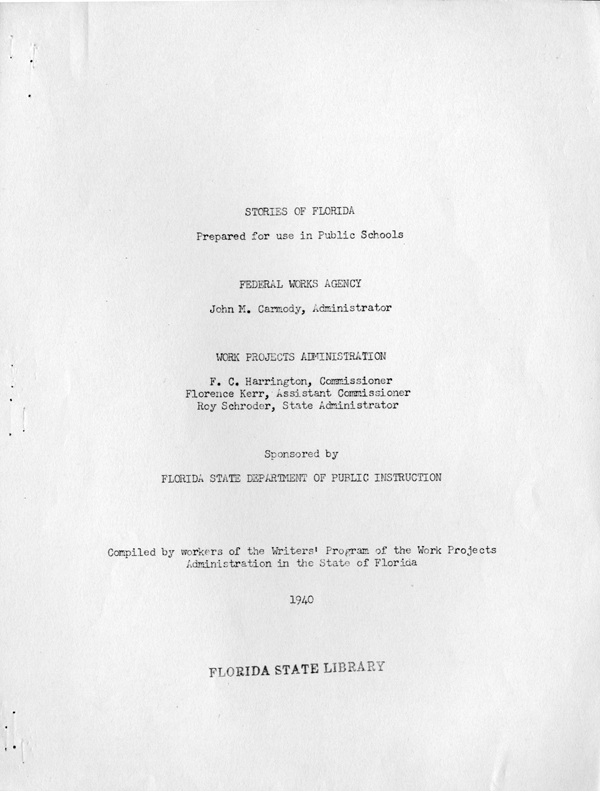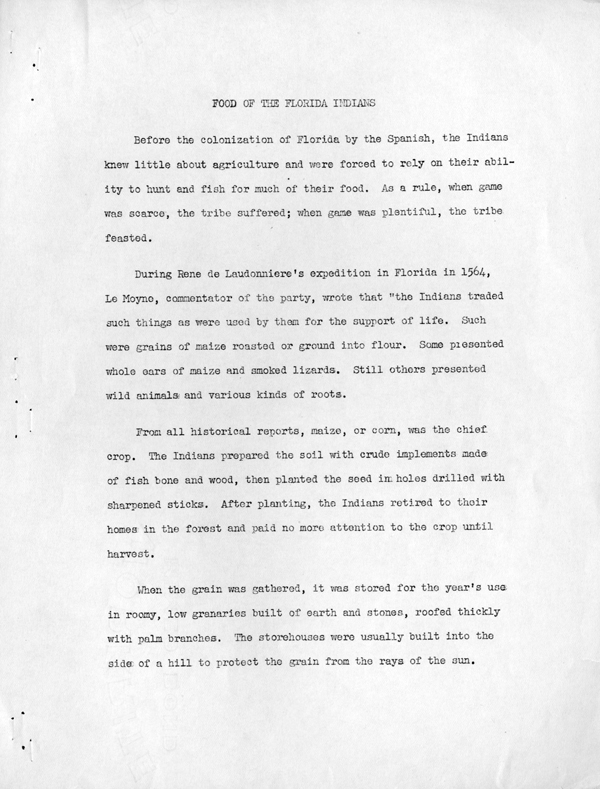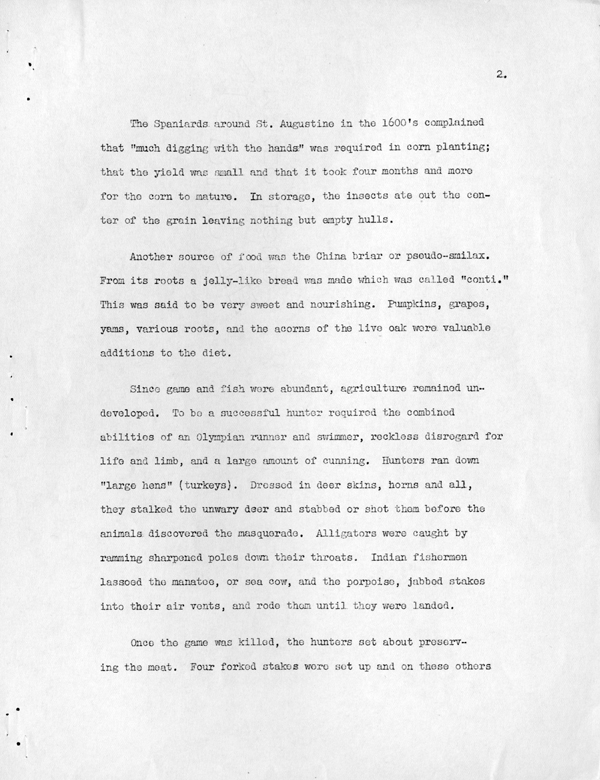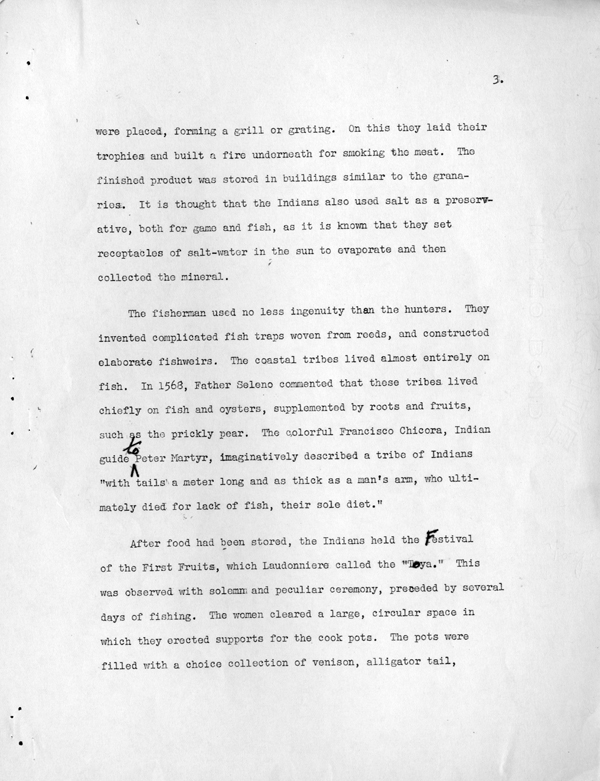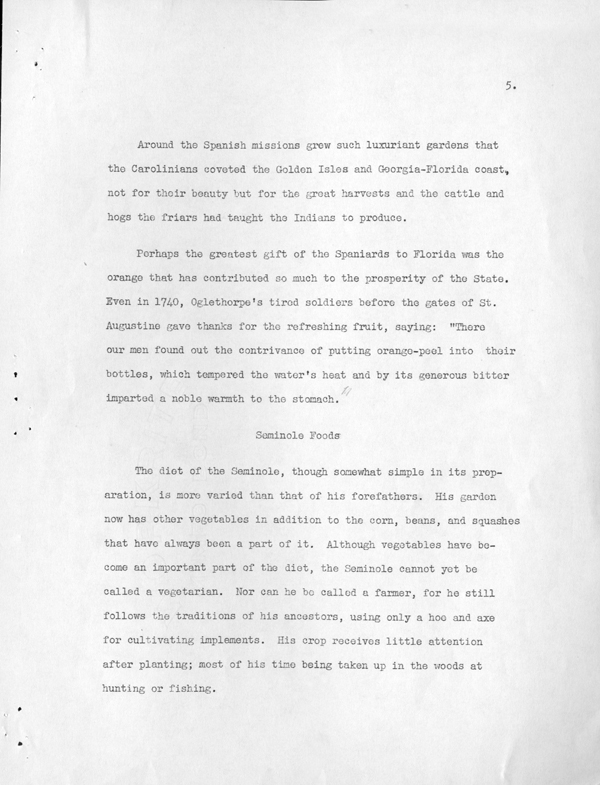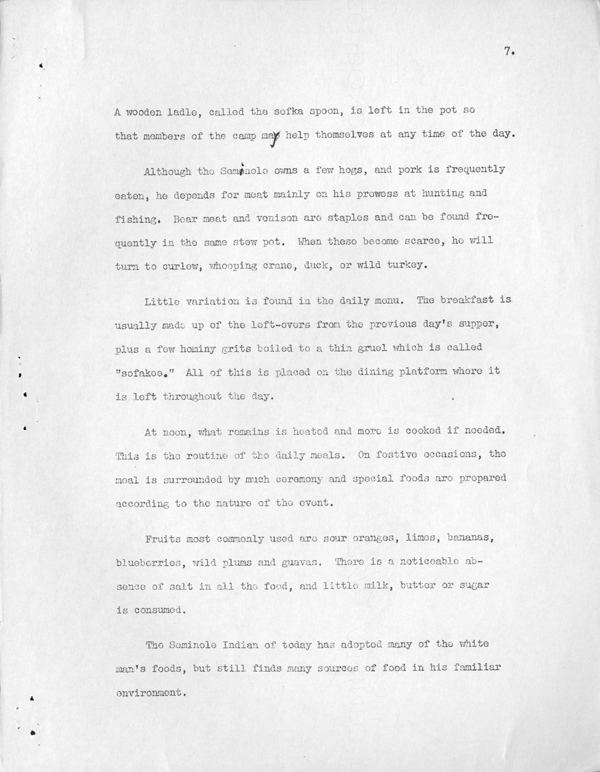Florida Memory is administered by the Florida Department of State, Division of Library and Information Services, Bureau of Archives and Records Management. The digitized records on Florida Memory come from the collections of the State Archives of Florida and the special collections of the State Library of Florida.

State Archives of Florida
- ArchivesFlorida.com
- State Archives Online Catalog
- ArchivesFlorida.com
- ArchivesFlorida.com
State Library of Florida
Related Sites
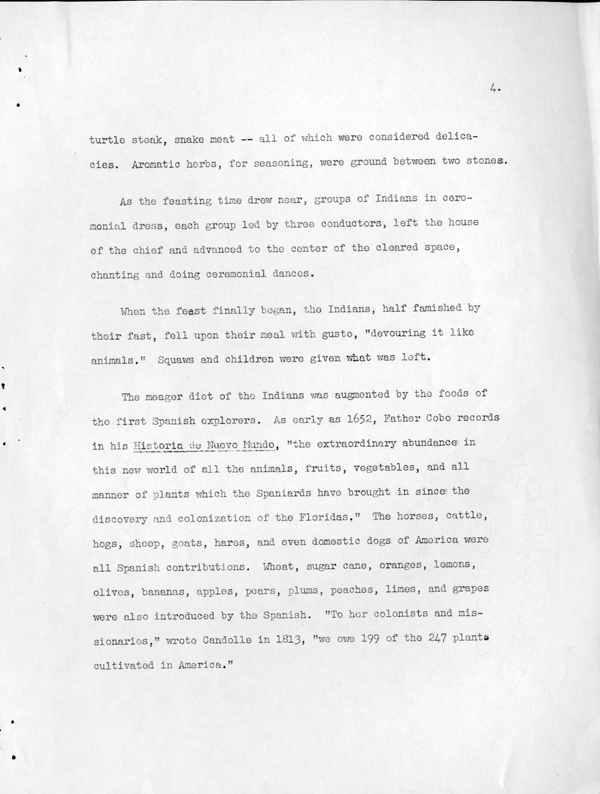
Description of previous item
Description of next item

Title
Published Date
turtle steak, snake meat-all of which were considered delicacies.
Aromatic herbs, for seasoning, were ground between two stones.
As the feasting time drew near, groups of Indians in ceremonial
dress, each group led by three conductors, left the house of the chief
and advanced to the center of the cleared space, chanting and doing
ceremonial dances.
When the feast finally began, the Indians, half famished by
their fast, fell upon their meal with gusto, "devouring it like animals."
Squaws and children were given what was left.
The meager diet of the Indians was augmented by the foods of
the first Spanish explorers. As early as 1652, Father Cogo records in
his Historia de Nuevo Mundo, "the extraordinary abundance in this
new world of all the animals, fruits, vegetables, and all manner of
plants which the Spaniards have brought in since the discovery and
colonization of the Floridas." The horses, cattle, hogs, sheep, goats,
hares, and even domestic dogs of America were all Spanish
contributions. Wheat, sugar cane, oranges, lemons, olives, bananas,
apples, pears, plums, peaches, limes, and grapes were also introduced
by the Spanish. "To her colonists and missionaries," wrote Candolle in
1813, "we owe 199 of the 247 plants cultivated in America."
Title
Subject
Description
Source
Date
Contributor
Format
Language
Type
Identifier
Published Date
Image URL
Thumbnail
Transcript Path
Image Path
Image Path - Large
Chicago Manual of Style
Food of the Florida Indians. 1940. State Archives of Florida, Florida Memory. <https://www.floridamemory.com/items/show/181520>, accessed 5 January 2026.
MLA
Food of the Florida Indians. 1940. State Archives of Florida, Florida Memory. Accessed 5 Jan. 2026.<https://www.floridamemory.com/items/show/181520>
AP Style Photo Citation

 Listen: The Folk Program
Listen: The Folk Program
